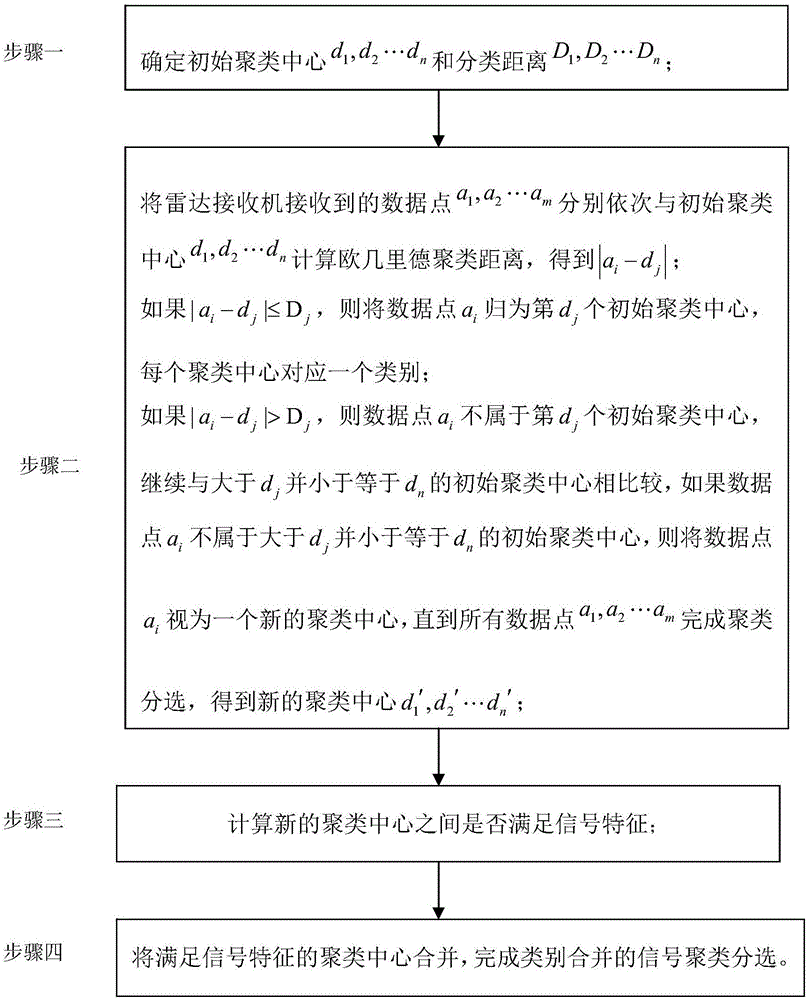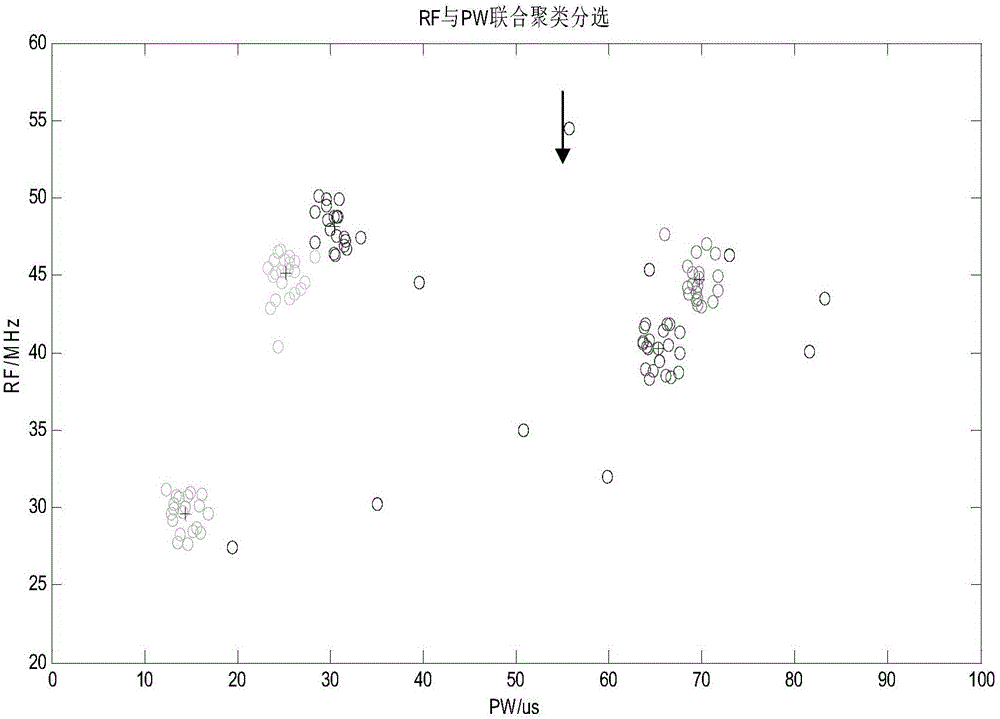Pulse signal cluster sorting method based on class merging
A pulse signal and category technology, which is applied in character and pattern recognition, instruments, computer parts, etc., can solve the problems of low correct rate of category numbers and discrepancies between the number of clusters and the number of real signals, etc.
- Summary
- Abstract
- Description
- Claims
- Application Information
AI Technical Summary
Problems solved by technology
Method used
Image
Examples
specific Embodiment approach 1
[0017] Specific implementation mode one: combine figure 1 To illustrate this embodiment, a method for clustering and sorting pulse signals based on category merging in this embodiment is specifically performed according to the following steps:
[0018] Step 1. Determine the initial clustering center d 1 , d 2 … d n and classification distance D 1 ,D 2 …D n , d 1 is the initial cluster center of the first category, d 2 is the initial cluster center of the second category, d n is the initial cluster center of the nth category, D 1 is the classification distance of the first category, D 2 is the classification distance of the second category, D n is the classification distance of the nth category, n is a positive integer;
[0019] Step 2, the data point a received by the radar receiver 1 ,a 2 …a m respectively with the initial cluster center d 1 , d 2 … d n Calculate the Euclidean clustering distance and get|a i -d j |, where, 1≤i≤m, 1≤j≤n,
[0020] if|a i -d...
specific Embodiment approach 2
[0025] Specific embodiment two: the difference between this embodiment and specific embodiment one is: in the step two Where k is the number of data points for each cluster center, a c For the data points contained in each cluster center, 1≤c≤k, k is a positive integer.
[0026] Other steps and parameters are the same as those in Embodiment 1.
specific Embodiment approach 3
[0027] Specific implementation mode three: the difference between this implementation mode and specific implementation mode one or two is: whether the signal characteristics are satisfied between the new cluster centers calculated in the step three; the specific process is called:
[0028] For the jitter signal, if the new cluster center satisfies the relationship:|d i '-d j '|≤(1+Δδ)D 0 , then d i ', d j 'Two cluster centers should be merged into the same category;
[0029] Among them, 1≤i≤n, 1≤j≤n, where d i ', d j 'respectively d 1 ',d 2 '...d n ′ in any two cluster centers, D 0 is the threshold parameter, and Δδ is the jitter value of 0.01-0.03; the threshold parameter is an artificial setting, an empirical value.
[0030] Other steps and parameters are the same as those in Embodiment 1 or Embodiment 2.
PUM
 Login to View More
Login to View More Abstract
Description
Claims
Application Information
 Login to View More
Login to View More - R&D
- Intellectual Property
- Life Sciences
- Materials
- Tech Scout
- Unparalleled Data Quality
- Higher Quality Content
- 60% Fewer Hallucinations
Browse by: Latest US Patents, China's latest patents, Technical Efficacy Thesaurus, Application Domain, Technology Topic, Popular Technical Reports.
© 2025 PatSnap. All rights reserved.Legal|Privacy policy|Modern Slavery Act Transparency Statement|Sitemap|About US| Contact US: help@patsnap.com



